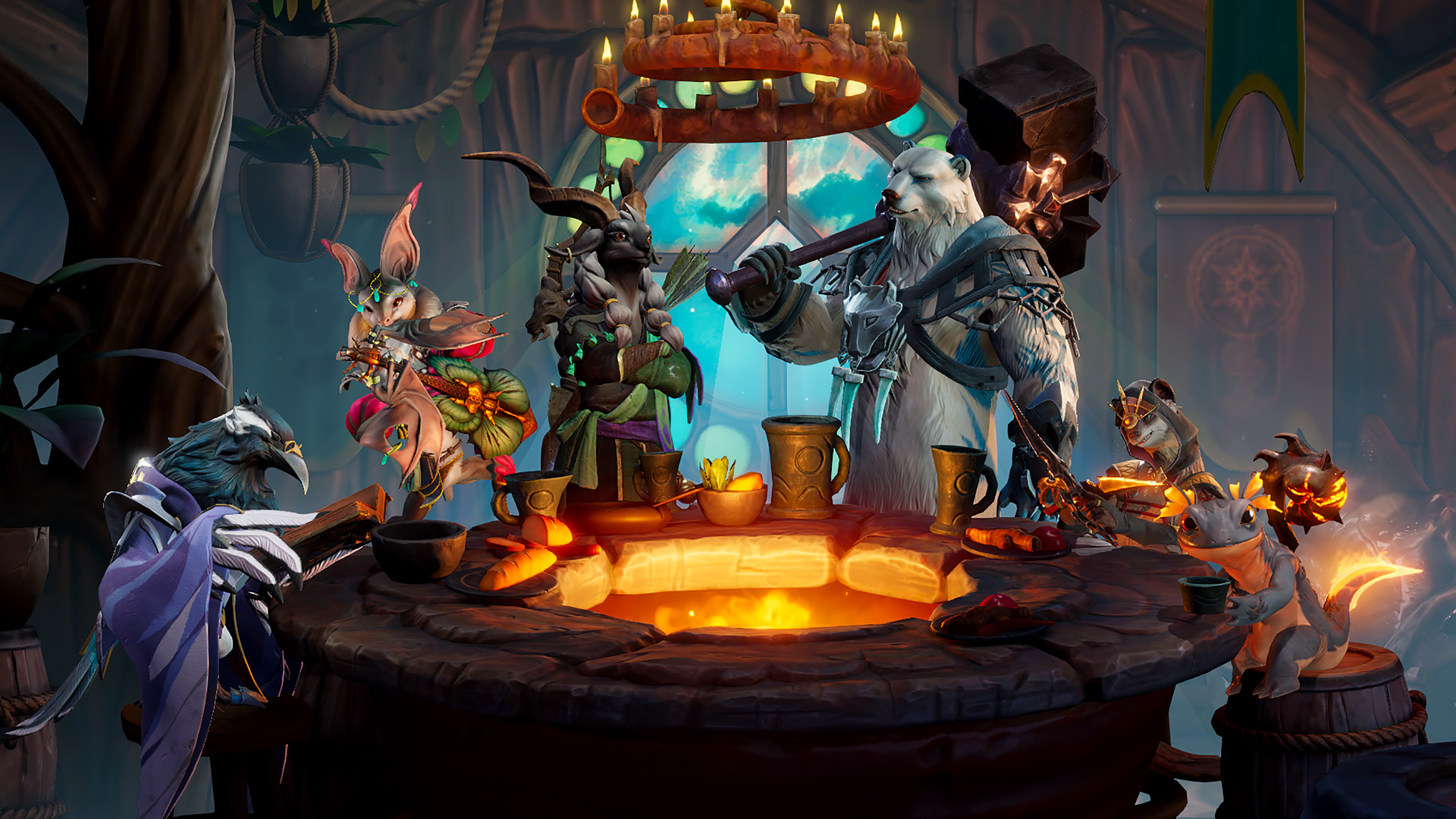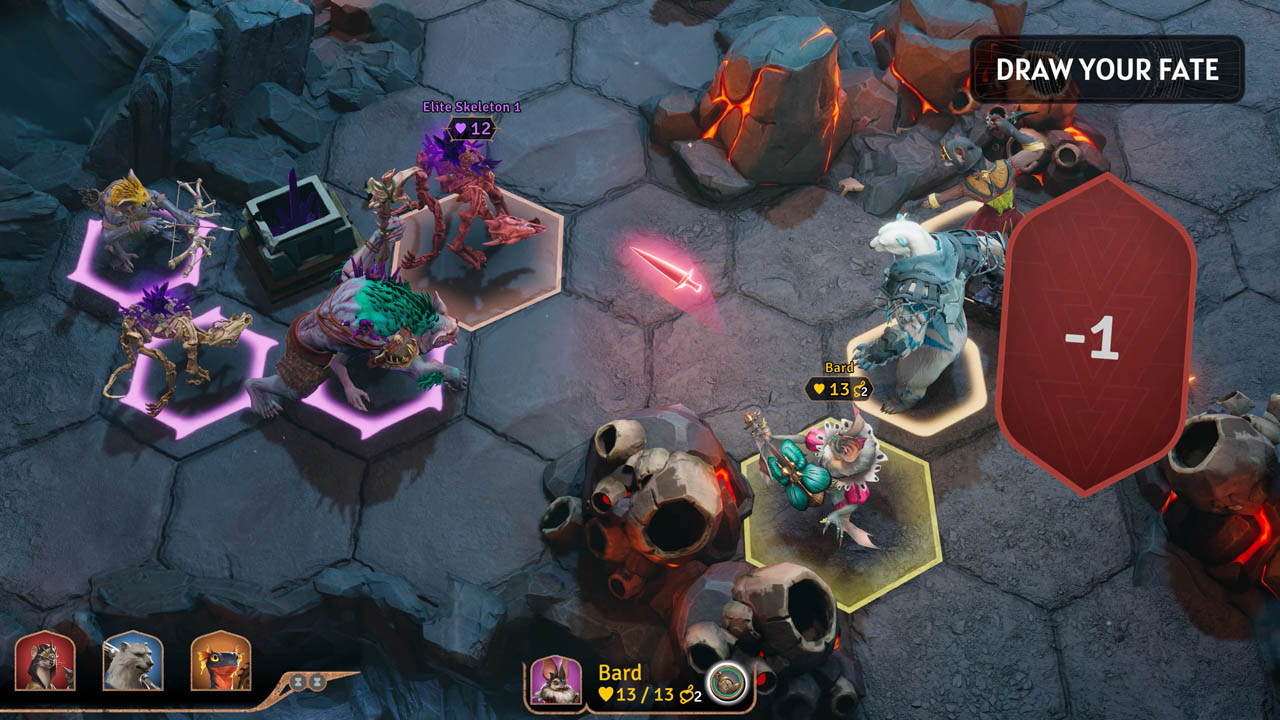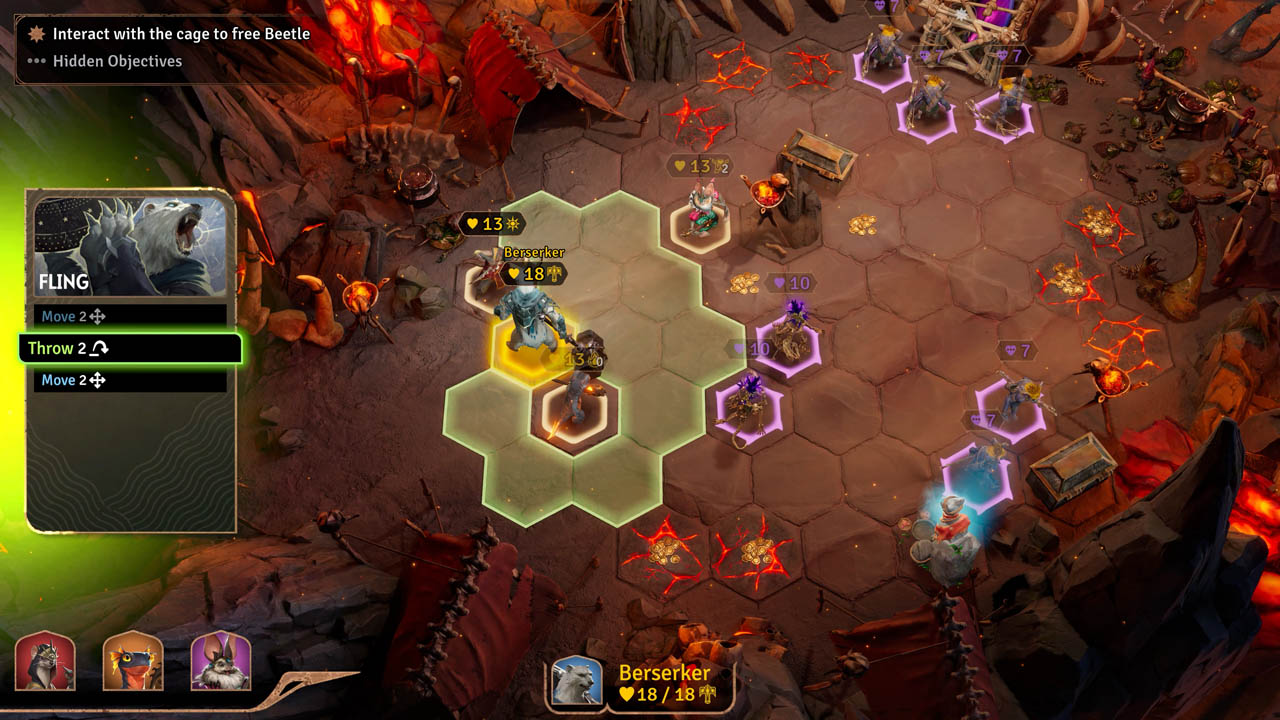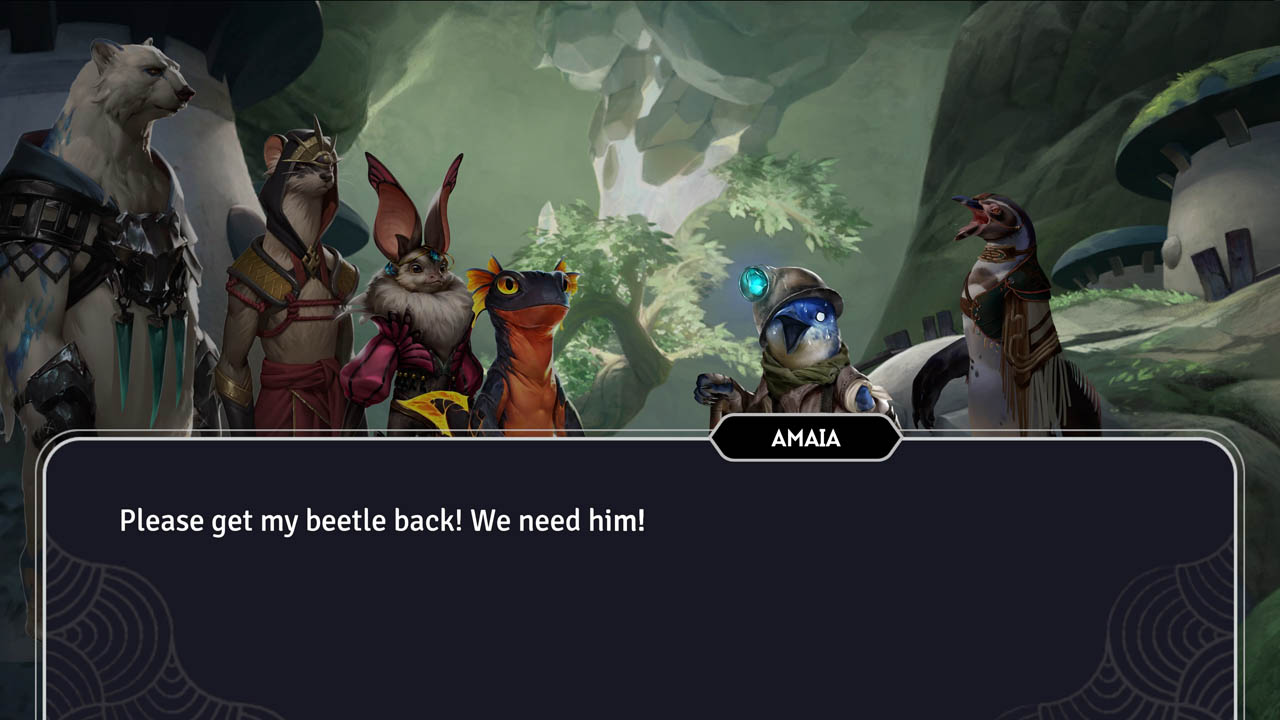
Any fan of tabletop gaming knows the struggle of getting new people to sit down around a table and listen while you tell them about the complex, arcane rules that take almost as long to explain as it takes to play the actual game. It’s tons of fun once you’re all caught up and playing, deep into the weeds of a game like Gloomhaven, but the barrier for entry is high.
Developed by Secret Door (a Dreamhaven studio), Sunderfolk aims to bring more people to the (virtual) tabletop, using a unique control interface, easy-to-pick-up gameplay that gradually grows in difficulty, and weapon-wielding animals. These well-armed critters are the players, Sunderfolk seeing two to four setting out on their fantasy adventure at a time. While plenty of the hexagonal, grid-based action takes place on the big screen – be that TV or monitor – players use their phones to direct their characters, animal versions of classic fantasy archetypes like a rogue, bard, or wizard, in turn-based combat.
So it's Dungeons & Dragons meets Jackbox? After going hands-on in sunny Los Angeles, that's the case aesthetically. After all, using your phone as a controller was inspired by Jackbox, which the Secret Door team played a lot during the pandemic. This deliberately makes the game accessible, but importantly Sunderkin is not a party game. It's a rather different beast.
"They’re very different experiences. We’re trying to get into that deeper thing where you’re puzzling something out together that takes tactical, strategic time," Sigaty says, adding that Sunderfolk is more of a tactical RPG experience than a role-playing game like D&D. So, while D&D meets Jackbox is an easy elevator pitch, it’s one Secret Door is trying to move away from.
Hex of a good time

In the world of Sunderfolk, a distant catastrophe has driven anthropomorphic animals underground, living in cozy harmony with a subterranean life-giving tree. When evil forces like monstrous ogres attack, a team of adventurers must gear up to save the day and unveil secrets across its 20-30-hour story.
Sitting down to begin a session, we're presented with six character options. We can't say no to embodying a big ax-wielding polar bear, a berserker who fulfils the typical tank role. A pyromaniac salamander sorcerer, and a batty bard round out the party into a merry band of three. Narrator Anjali Bhimani (best known as the voice behind Overwatch’s Symmetra), sets the stage – and voices every single NPC, using a different voice for each critter. It’s a deliberate choice, the developers explain, to evoke the feeling of a Game Master running a traditional tabletop game. It’s a charming touch.
It's not the only area in which Sunderfolk elicits the feeling of collaborative storytelling sitting around a table. We have the chance to suggest a name for enemy archers, which we call 'zingers', and is acknowledged by the game as much as it is between us players. It's a neat bit of casual customization that injects some ownership over the enemies and features you encounter on the board.

Each turn, the party decides who will go first by swiping on the phone. When it's your move, you choose an action card on your device, where the details of which are succinctly explained. Actions usually combine both movement and an ability. Taking my role as berserker seriously, in one turn I choose a card where I move four spaces and then attack an enemy, forcing them to target me on their next turn while also increasing my defense to withstand that coming onslaught. During another, I move three spaces followed by a whirlwind attack that slashes through every surrounding foe.
When making an attack, you select a 'Fate' card – Sunderfolk’s equivalent of a twenty-sided die. A third of your cards are positive (think +1 or +2 to damage), a third are negative (so -1 or even a straight-up miss), and a third are neutral. While we love the feel of throwing down dice, cards suit the phone-to-TV set-up seamlessly.
As you level up, you’ll gain new action cards and new fate cards, though you can only have so many in your virtual deck so you’ll have to pick, choose, and customize your kit. I swapped a card that let me throw enemies or allies around the map (situationally handy but I wasn’t using it much) for one that let me incite foes and allowed me to counterattack on their turns. Fate cards get more complex, too. Swapping a +1 for another +2 is an obvious move, but you also gain other sorts of modifiers, like a card with a -1 (bad) that also decreases that enemy’s attack (good!). The basics of the gameplay are simple; the possibilities vast.
Systems are go

"Instead of having lots of complex systems, let’s have a few systems that are really core to the game and go deep with the content," Erin Marek, Sunderfolk’s game director, says of the design philosophy. "It’s very easy to onboard folks with content and add more complex things over time, versus having a ton of complex systems you have to teach them all up front."
True to the developers’ word, my party quickly finds our rhythm. The little screen feels intuitive to use for sorting through our own information, while real-life communication comes to the fore, talking through our options for where to head on the big screen and what abilities we might want to throw out and when.

By the end of our first proper level (each takes about 15-20 minutes, a nice bite-sized length), we're discussing increasingly complex strategies with each other. "If your bat bard lures this enemy here, then your sorcerer salamander can hit all three of these guys with his fire spell that goes in a straight line." "Oh great! And then I can use some of my movement to push you out of the front lines before inciting the survivors so they go for me instead of you."
A different party composition – or even the same characters with different action cards – can approach the same situation in a totally different way. Nobody in my party was one of the other three characters, a rogue weasel, ranger elk, or wizard raven. (There is no monk class, but additional classes and the possible animals that best suited them are topics of conversation among the developers when it comes to possible DLC – not to get ahead of themselves.)
Animal style

Both the animals and the approach to visual design overall are part of Sunderfolk’s effort to draw in experienced tabletop or tactical-role-playing game experts and more casual players. The animals are cute but not too cute. Think Redwall by way of Warcraft. It’s not a cartoonish game that’s just for kids, but it’s not some hard-edged fantasy epic either. Marek says an early version of what would become Sunderfolk featured people instead of animals, but going zoological had several benefits.
"Animals can help you understand an archetype before you know anything about the archetype," she says. And indeed, one look at the big polar bear I played as says a lot about his gameplay niche. "They also are a lot more accessible when it comes to gender projection or roleplaying."
But, for as much as Sunderfolk is hoping to get rookie tabletop gamers having animal adventures, it is very much a real game with real challenges despite the cozy vibes. My party lost one of the levels we played when all of our plans to escort a beetle (the Sunderfolk’s livestock equivalent) to safety were dashed when an enemy cut him off at the pass. Other times, we found ourselves surrounded by enemies and needed to think hard about all our abilities and how to combine them in order to win the day.

"We’ve worked hard to create an experience that has depth. You have to be strategic and tactical in your battles and if you’re not successful, you may not be able to pass certain missions until you can find out ways to get it done," Sigaty says. "That’s the exciting thing, we hope, for the group. It needs to appeal to core gamers, and I think it does have that appeal and that depth as somebody who has played a lot of these games before while simultaneously bringing in loved ones and friends who have never done this before."
I left the preview still thinking about some of the tactics I might be able to unleash on Sunderfolk's hexagonal grids. It’s still early to say 'mission accomplished' – Sunderfolk doesn’t have a price or a specific release date beyond 2025 – but those are promising signs.
Sunderfolk releases in 2025 for PC and major consoles. In the meantime, want some physical recommendations? Check out our list of the current best tabletop RPGs!







